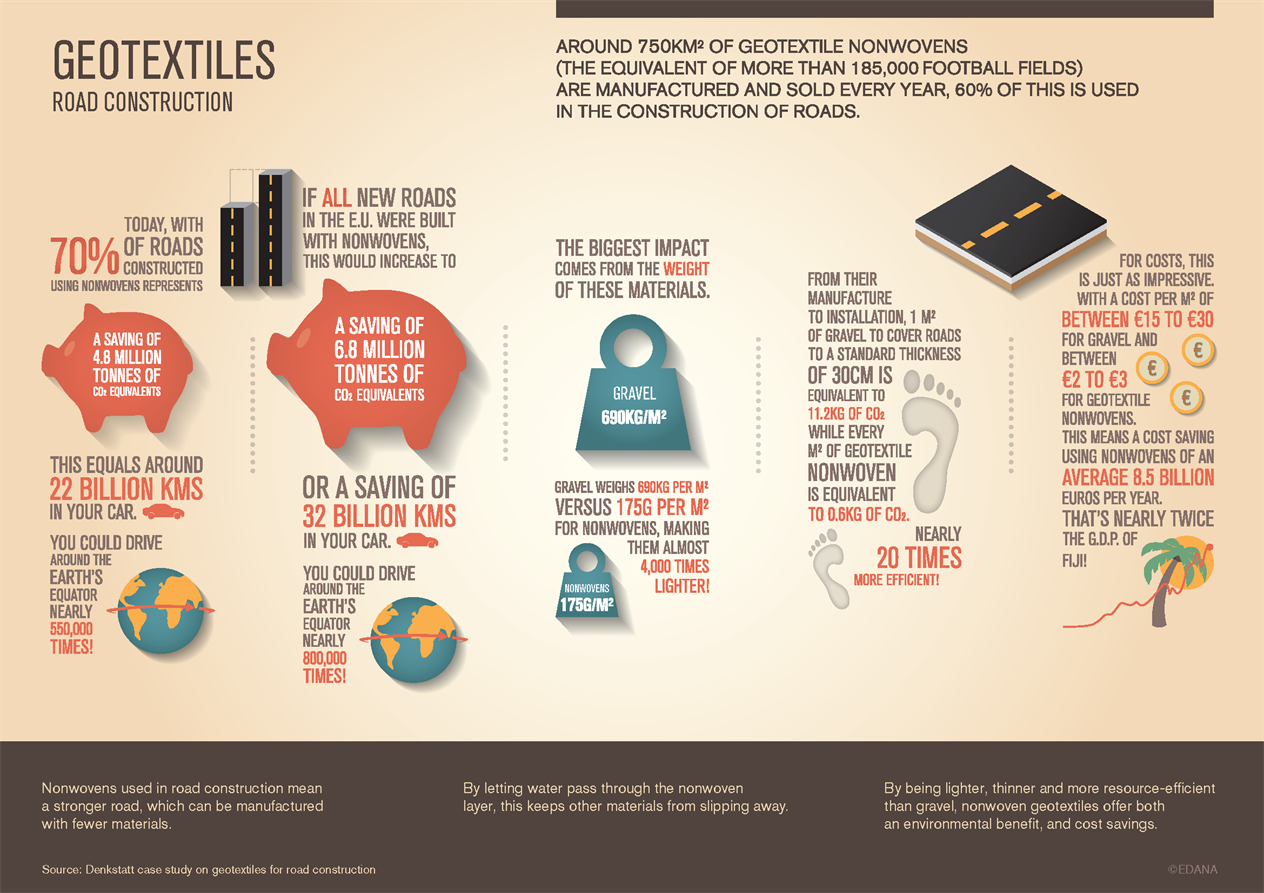Why use nonwovens in geosynthetics and civil engineering?
Geosynthetics, speciality nonwovens in the civil engineering field, form the backbone of numerous civil engineering projects. Nonwovens are used for separation, reinforcement and as filters in the construction of motorways, airfields, railways, sports fields, drainage trenches, dams and dykes. They are laid to form a roll and are light and easy to handle, despite their strength and toughness.
Rapid developments in infrastructure have led to huge demand for nonwovens in water conservancy, highway, railway, sea and airport projects as they satisfy the qualities needed for these demanding environments. They are strong, tear and puncture resistance, lightweight and tolerant to fluctuations in temperature. Treating geosynthetics with eco-friendly additives enhances water repellence and resistance against biological degradation for soil reinforcement that requires durability, such as the control of river bank erosion. The unique flexibility of nonwovens also makes them suitable for use in securing landfill construction and in drainage/filtration applications, as optimal separation fabrics.
The different uses are:
- Road and rail building
- Dam, canal and pond lining
- Hydraulic works
- Sewer lines
- Soil stabilisation and reinforcement
- Soil separation
- Drainage
- Landfill
- Filtration
- Sedimentation and erosion control
- Weed control
- Root barriers
- Sport surfaces
- Asphalt overlay
- Impregnation base
- Drainage channel liners
The advantages of using nonwovens in geosynthetics and civil engineering
- Ability to separate, filter, drain, protect and reinforce
- Superior strength and durability
- Tear and puncture resistance
- Elasticity
- Permeability
- Low humidity
- Absorption
- Resistance to rotting, chemicals, bacteria and fungi.
- Lightweight
- Temperature fluctuation tolerant
- Stress-relieving
Nonwovens technologies used in geosynthetics and civil engineering
More information on nonwovens test methods
Industry Articles related to Geosynthetics & Civil Engineering
- Nonwovens provide invisible functions in building and construction
- Peak performers on the pistes
- Essential assistance for infrastructure


